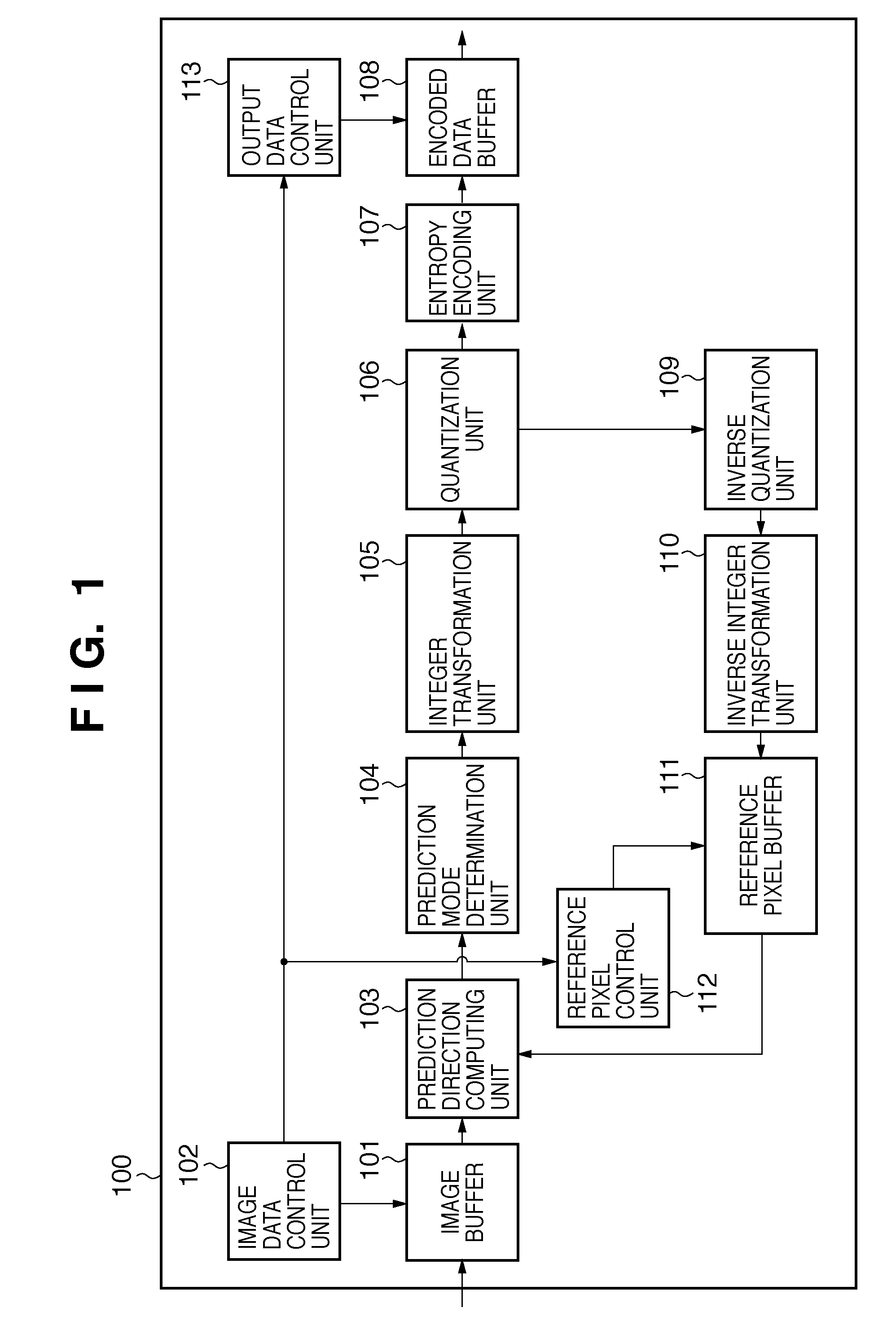Image encoding apparatus, method of controlling the same and computer program
a technology of image encoding and control apparatus, applied in the field of image encoding technique, can solve the problems of inability to achieve high-speed encoding, low activation rate of circuits that perform each processing step,
- Summary
- Abstract
- Description
- Claims
- Application Information
AI Technical Summary
Problems solved by technology
Method used
Image
Examples
first embodiment
[0029]FIG. 1 is an example of a functional block diagram of an image encoding apparatus 100 according to a first embodiment of the present invention. All of the components may be implemented by hardware, or some of the components may be implemented by software. Input image data from an external camera or the like (not shown) is written to the image encoding apparatus 100 in units of macroblocks of 16×16 pixels. The macroblocks of the input image data are held in an image buffer 101.
[0030]An image data control unit 102 partitions each macroblock into blocks of 4×4 pixels each. A “block” as simply expressed hereinbelow means a block of 4×4 pixels. The image data control unit 102 then reads out a block to be processed from the image buffer 101. A prediction direction computing unit 103 calculates a difference value between a reference pixel and a pixel of the block to be encoded for each of a plurality of prediction directions. A prediction mode determination unit 104 selects the diffe...
second embodiment
[0060]In the first embodiment, the efficiency of pipeline processing was improved by performing encoding processes in the order in which the first block for which all of the prerequisite reference pixels are available is the first to be processed. However, when entropy encoding and the like 807 takes a long processing time, in some cases, a sufficient effect cannot be obtained with the configuration of the first embodiment. An example of such a case will be described using FIG. 8.
[0061]FIG. 8 is a diagram for explaining an example of a time chart of pipeline processing in the case where entropy encoding and the like 807 takes a long processing time. In the description here, encoding processes of B2 and B4 will be focused on. At a stage when 4×4 prediction 701 for B2 is completed, 4×4 prediction 701 for B4 can be started. However, entropy encoding and the like 807 for B4 cannot be started until processing of entropy encoding and the like 807 for B2 is completed. Thus, even when proce...
PUM
 Login to View More
Login to View More Abstract
Description
Claims
Application Information
 Login to View More
Login to View More - R&D
- Intellectual Property
- Life Sciences
- Materials
- Tech Scout
- Unparalleled Data Quality
- Higher Quality Content
- 60% Fewer Hallucinations
Browse by: Latest US Patents, China's latest patents, Technical Efficacy Thesaurus, Application Domain, Technology Topic, Popular Technical Reports.
© 2025 PatSnap. All rights reserved.Legal|Privacy policy|Modern Slavery Act Transparency Statement|Sitemap|About US| Contact US: help@patsnap.com



